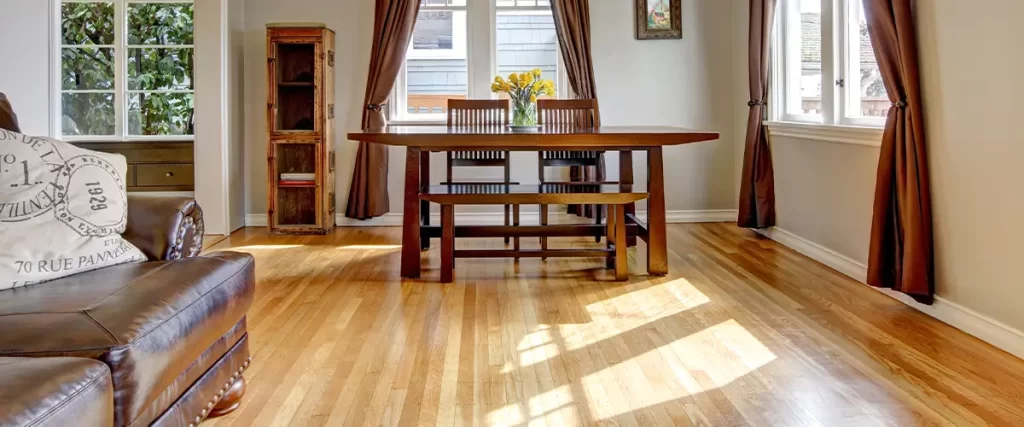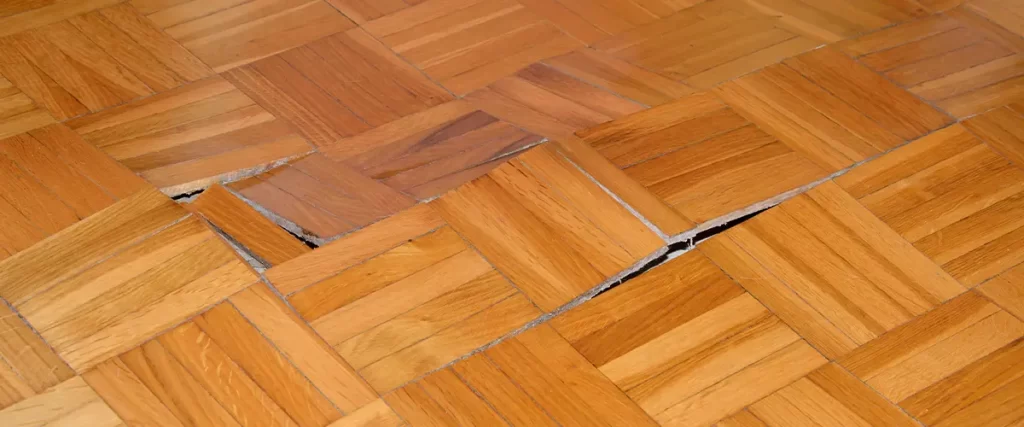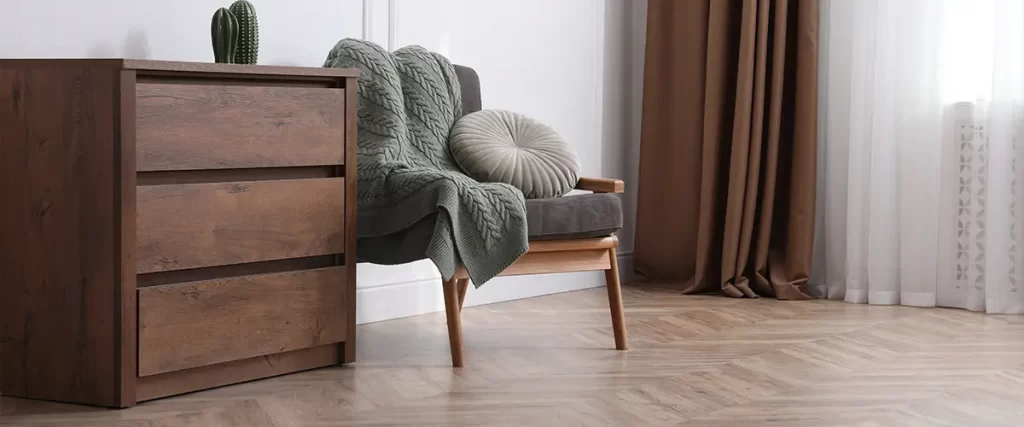So, you’ve installed luxury vinyl plank (LVP) flooring, and you’re loving the look. It’s durable, stylish, and perfect for your busy lifestyle. But, like any flooring, LVP can sometimes run into issues. Maybe you’ve noticed some gaps, or perhaps the planks are starting to peel.
Don’t worry; you’re not alone. Many homeowners experience similar problems. And let’s be honest, those issues can be a real headache. You want your floors to look perfect, and any flaw can be frustrating.
But here’s the good news: most LVP problems are fixable, and understanding the common issues is the first step to keeping your floors looking their best. Let’s dive into the common problems with LVP flooring and how to tackle them.

Common Luxury Vinyl Plank Flooring Problems
LVP is known for its durability and versatility, but it’s not immune to problems. Here are some of the most common issues homeowners encounter:
- Gapping: Gaps between planks, often due to improper installation or temperature fluctuations.
- Peeling: The wear layer peeling off, usually caused by moisture or adhesive issues.
- Fading: Color fading due to prolonged exposure to sunlight.
- Buckling: Planks lifting or warping, typically caused by moisture or improper installation.
- Scratches and Dents: Surface damage from sharp objects or heavy furniture.
- Adhesive Issues: Problems with the adhesive used during installation.
Understanding these issues is crucial to addressing them effectively.
Gapping: Causes and Solutions
Gapping is a common issue with LVP flooring. It occurs when gaps appear between the planks, affecting the floor’s appearance and integrity.
- Causes:
- Improper installation, such as not leaving enough expansion space.
- Temperature and humidity fluctuations, causing the planks to expand and contract.
- Low-quality planks that don’t fit together tightly.
- Solutions:
- Ensure proper acclimation of the planks before installation.
- Maintain consistent indoor temperature and humidity levels.
- Use high-quality planks with a reliable locking system.
- For minor gaps, use a color-matched filler.
- For major gaps, planks may need to be removed and reinstalled.
Peeling: Causes and Solutions
Peeling occurs when the wear layer of the LVP starts to separate from the print layer.
Causes:
- Excessive moisture exposure.
- Poor-quality adhesive or improper application.
Damage from harsh cleaning chemicals.
Solutions:
- Identify and address the moisture source.
- Replace damaged planks with high-quality LVP.
- Use cleaning products specifically designed for LVP.

Additional Common Problems and Solutions
Fading
Fading in luxury vinyl plank (LVP) flooring is often caused by prolonged exposure to direct sunlight or the use of harsh cleaning chemicals. To prevent this, consider using curtains or blinds to block direct sunlight and opt for cleaning products specifically designed for LVP. Additionally, rotating rugs and furniture can help distribute sunlight exposure evenly, reducing the risk of fading.
Buckling
Buckling occurs when LVP flooring is exposed to excessive moisture, installed improperly without enough expansion space, or laid over a problematic subfloor. To address this issue, identify and resolve any moisture sources, ensure proper acclimation and installation practices, and repair any subfloor issues before laying the flooring.
Scratches and Dents
Scratches and dents can result from sharp objects, heavy furniture, or pet claws. To minimize damage, use felt pads on furniture legs, regularly trim pet nails, and place rugs in high-traffic areas. If certain planks become heavily damaged, consider replacing them to maintain the flooring’s appearance.
Adhesive Issues
Adhesive issues can arise due to poor-quality adhesives, improper subfloor preparation, or moisture. To avoid these problems, use high-quality adhesive and ensure the subfloor is clean, level, and dry before installation. Address moisture sources promptly, and replace any affected planks if necessary.
Preventing LVP Flooring Problems
Prevention is key to maintaining the beauty and longevity of your LVP flooring. Here are some essential tips:
- Proper Installation: Ensure professional installation or follow manufacturer guidelines carefully.
- Acclimation: Allow planks to acclimate to your home’s environment before installation.
- Moisture Control: Maintain consistent indoor humidity levels and address any moisture sources promptly.
- Regular Cleaning: Sweep or vacuum regularly and use appropriate cleaning products.
- Protect Against Scratches: Use felt pads on furniture legs and trim pet nails.
- Avoid Harsh Chemicals: Use cleaning products specifically designed for LVP.
- Sunlight Protection: Use curtains or blinds to block direct sunlight.
Top Luxury Vinyl Plank Flooring Manufacturers for Quality and Durability
Choosing high-quality LVP from reputable manufacturers can significantly reduce the risk of common issues.
- COREtec Floors: Specializes in waterproof LVP, known for durability and easy installation. They have a strong reputation for waterproof products.
- Shaw Floors: Offers a wide range of LVP options, with a focus on innovation and style. They have a massive selection of flooring.
- Mohawk Industries: Known for high-quality LVP, offering a variety of designs and finishes. They have a focus on design and quality.
- Armstrong Flooring: Provides durable and stylish LVP, with a focus on moisture resistance and longevity. They have a good reputation for durability.
FAQ: Luxury Vinyl Plank Flooring Problems
Can LVP flooring be repaired?
Yes, minor scratches and gaps can often be repaired with color-matched fillers or repair kits. Severely damaged planks can be replaced.
How do I prevent gaps in my LVP flooring?
Ensure proper acclimation, maintain consistent indoor temperature and humidity levels, and use high-quality planks with a reliable locking system.
What cleaning products should I use on LVP flooring?
Use cleaning products specifically designed for LVP. Avoid harsh chemicals or abrasive cleaners that can damage the wear layer.
Can LVP flooring be installed in bathrooms and basements?
Yes, LVP is highly moisture-resistant, making it suitable for bathrooms and basements. However, it’s essential to address any underlying moisture issues before installation.
How long does LVP flooring last?
With proper care and maintenance, LVP flooring can last 15-25 years or more.

Why Choose Our Expert Team for LVP Flooring Solutions
Our team has years of expertise in LVP flooring solutions. Working with the best ensures top-quality results that save you money long-term. Contact us at (843) 900-4880 today!
